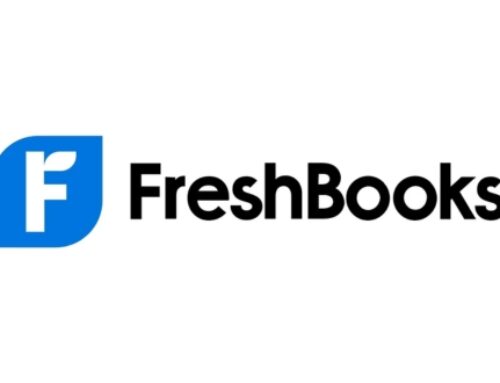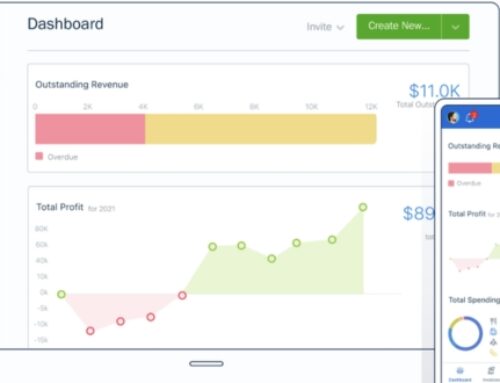Understanding FreshBooks:
Overview of Fresh Books Invoice Generation and Management :
Background and History:
FreshBooks, founded in 2003 by Mike McDerment, emerged as a cloud-based accounting software designed to simplify invoicing and financial management for small businesses and freelancers. Over the years, it has grown into a comprehensive business accounting solution, catering to the evolving needs of its user base.
Evolution of FreshBooks Features:
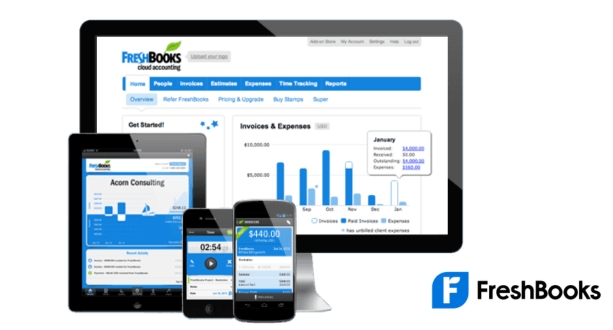
FreshBooks has continually evolved, adapting to the dynamic landscape of business requirements. Initially focused on invoicing, it has expanded its feature set to include expense tracking, time tracking, project management, and more. The software’s adaptability showcases its commitment to providing a holistic solution for businesses, addressing various aspects of financial management.
Key Benefits for Businesses:
One of FreshBooks‘ main strengths lies in its user-friendly approach, allowing even those without an accounting background to manage their finances effortlessly. The platform promotes efficiency through automated processes, reducing the time and effort required for invoicing, expense tracking, and other financial tasks. Additionally, the ability to access real-time financial data facilitates informed decision-making for business owners.
FreshBooks Interface:
Dashboard Overview:
The FreshBooks dashboard serves as the central hub, offering users a snapshot of their financial status. It provides a quick overview of key metrics such as income, expenses, and outstanding invoices. This centralized view enables users to stay informed about their business’s financial health at a glance.
Navigation and Menu Structure:
FreshBooks boasts an intuitive navigation system, ensuring that users can easily locate and access the features they need. The menu structure is logically organized, with clear categorization of functions like invoicing, expenses, and reports. This thoughtful design enhances user experience and minimizes the learning curve for those new to the platform.
Customization Options for Personalized Experience:
Recognizing that each business has unique needs, FreshBooks offers robust customization options. Users can tailor their experience by adjusting settings, branding documents, and configuring preferences to align with their specific requirements. This flexibility not only enhances user satisfaction but also allows businesses to maintain a professional and personalized image in their financial interactions.
FreshBooks stands out as a comprehensive and user-friendly accounting solution that has evolved to meet the diverse needs of businesses. Its well-designed interface ensures accessibility and efficiency, making financial management a streamlined and organized process for users.
Setting Up Your FreshBooks Account:
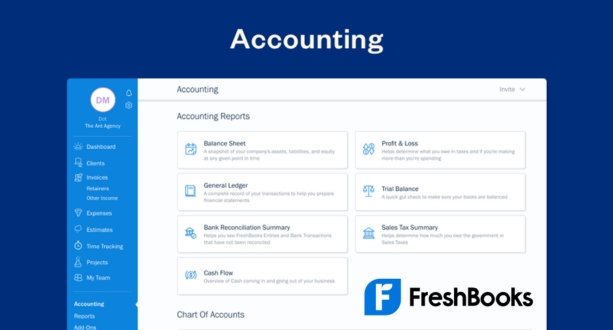
Setting up your FreshBooks account involves several key steps to ensure a seamless and personalized experience for your business. The process can be broken down into two main categories: registration and onboarding, and company profile and settings.
Registration and Onboarding:
The first step in setting up your FreshBooks account is creating an account. This involves providing basic information about your business, such as your company name, email address, and password. Once your account is created, you’ll be guided through an initial setup wizard. This wizard is designed to help you configure essential settings quickly.
During the onboarding process, FreshBooks allows you to integrate your account with other tools and platforms that your business relies on. This integration streamlines your workflow by syncing data between FreshBooks and other applications, reducing manual data entry and saving you time.
Company Profile and Settings:
Once the initial setup is complete, it’s time to focus on customizing your company profile and settings to align with your business requirements.
Customizing company information is a crucial aspect of this setup. You can input details such as your business address, contact information, and logo. This customization not only personalizes your FreshBooks account but also adds a professional touch to your invoices and communications.
Setting currency and language preferences is another important step. FreshBooks supports multiple currencies and languages, allowing you to cater to a global audience if needed. This feature is particularly beneficial for businesses with international clients or vendors.
Configuring tax settings is the final step in this category. FreshBooks provides flexibility in handling various tax scenarios, allowing you to set up tax rates based on your location and comply with local tax regulations. This ensures that your invoices accurately reflect the applicable taxes, helping you maintain financial accuracy and compliance.
Setting up your FreshBooks account involves a thoughtful and systematic approach. From the initial registration and onboarding process to fine-tuning your company profile and settings, each step contributes to creating a tailored and efficient financial management system for your business.
Mastering FreshBooks Invoicing:
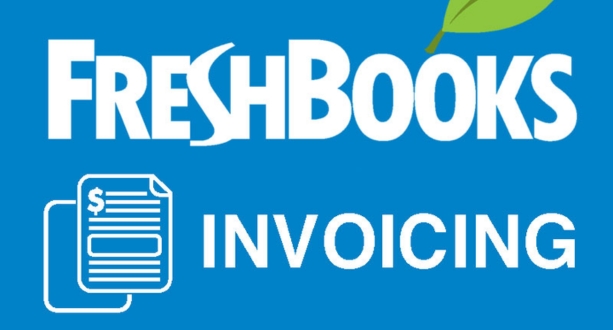
Mastering FreshBooks Invoicing involves several key aspects, each playing a crucial role in streamlining your billing process and enhancing your professional image. Let’s delve into each component with more detail:
Creating Invoices:
Generating invoices efficiently is fundamental to any invoicing system. FreshBooks provides a step-by-step guide to this process, ensuring that users can easily navigate through the system. The customization options are extensive, allowing you to personalize your invoices according to your business needs. This includes tailoring templates to showcase your brand effectively and adding specific details such as products, services, and expenses to create a comprehensive and accurate invoice.
Automatic Recurring Invoices:
Recurring invoices offer numerous benefits for businesses with regular billing cycles. FreshBooks simplifies this process by automating the creation and delivery of recurring invoices. This not only saves time but also ensures consistency and accuracy in billing. Setting up and managing recurring invoices is made user-friendly, providing businesses with the tools to establish a reliable and efficient invoicing system. The emphasis here is on reducing manual effort, minimizing errors, and ensuring that clients receive their invoices promptly and consistently.
Invoice Customization:
The customization options in FreshBooks extend beyond the content of the invoice. Your brand’s identity is a crucial aspect, and FreshBooks recognizes this by allowing users to incorporate logos and branding elements into their invoices. The ability to choose color schemes and fonts further adds to the personalization options, allowing businesses to align their invoicing documents with their overall visual identity. This attention to detail is crucial for creating a professional and cohesive image, which can contribute to a positive perception of your brand.
FreshBooks understands that your invoices are not just financial documents but also representations of your business. By providing users with tools to tailor these documents to match their unique brand identity, FreshBooks empowers businesses to make a lasting impression on clients and partners. This comprehensive approach to invoicing, from creation to customization, demonstrates FreshBooks’ commitment to offering a user-friendly and versatile platform for effective financial management.
Advanced Features for Efficient Invoicing:

Time Tracking and Billing:
One of the key advanced features for efficient invoicing is the incorporation of robust time tracking and billing functionalities. This involves utilizing the built-in timer feature, which allows users to accurately measure the time spent on a particular project or task. By seamlessly integrating these time entries into invoices, businesses can generate precise bills that reflect the actual effort invested. This feature is particularly beneficial for service-based industries where billable hours are a critical component of the revenue stream. Effective management of billable hours ensures that clients are billed accurately and businesses are compensated fairly for their services.
Expense Tracking and Invoicing:
Another essential aspect of advanced invoicing is the integration of expense tracking capabilities. This involves capturing and categorizing various expenses related to a project or service. These expenses can include travel costs, materials, or any other reimbursable items. The system should allow for easy attachment of these expenses to corresponding invoices, creating a comprehensive and transparent overview of the costs incurred. Real-time expense reporting further enhances the invoicing process by providing immediate insights into project expenditures. This feature is crucial for businesses aiming to maintain financial control and accurately reflect all project-related costs in their invoicing.
Client Portals:
Client portals represent a sophisticated feature that significantly contributes to efficient invoicing and client communication. These portals serve as a dedicated space where clients can interact with their invoices and payment history. By enabling clients to view invoices and track payment statuses in real time, businesses enhance transparency and foster stronger client relationships. The client portal not only streamlines communication but also empowers clients to access the information they need at their convenience. This improved accessibility contributes to client satisfaction, as clients feel more informed and involved in the billing process. Ultimately, client portals play a pivotal role in creating a positive and transparent invoicing experience.
Tracking and Managing Payments:
Online Payment Options:
In the realm of modern business transactions, online payment options play a pivotal role in facilitating smooth and efficient financial processes. One fundamental aspect involves integrating payment gateways seamlessly into the business infrastructure. This integration allows for a secure and streamlined transfer of funds, reducing the friction often associated with traditional payment methods.
Furthermore, businesses can enhance customer convenience by enabling credit card payments. This not only broadens the scope of clientele but also caters to the preferences of individuals who prefer the ease and speed associated with credit card transactions. Offering multiple payment options, such as digital wallets and bank transfers, further ensures that customers have the flexibility to choose the method that suits them best.
Late Payment Reminders:
Late payments can be a challenge for businesses, impacting cash flow and overall financial stability. To mitigate this issue, implementing automated reminders becomes crucial. Setting up automated systems to send gentle yet persistent reminders helps nudge clients to fulfill their payment obligations promptly. Crafting effective communication for overdue payments is an art that balances professionalism and assertiveness. This involves conveying the importance of timely payments while maintaining a positive tone to preserve client relationships.
Strategies for maintaining client relationships during payment follow-ups are essential for fostering goodwill. This may include personalized communication, understanding client circumstances, and offering flexible solutions. Balancing the need for timely payments with a client-centric approach is key to ensuring that the business-client relationship remains strong even in challenging financial situations.
Payment Reconciliation:
Payment reconciliation is a meticulous process that involves tracking payment status in real-time and ensuring that all financial transactions align with the corresponding invoices. Real-time tracking provides businesses with up-to-date information on the status of payments, allowing for proactive decision-making.
Reconciling payments with invoices is vital for financial accuracy. This process involves cross-referencing payment records with issued invoices to identify any discrepancies. Addressing discrepancies promptly is crucial to maintaining financial integrity and transparency. This includes investigating and resolving any errors or inconsistencies, ensuring that both the business and its clients have a clear and accurate record of financial transactions.
A comprehensive approach to tracking and managing payments involves seamlessly integrating online payment options, implementing effective late payment reminders, and maintaining accuracy through payment reconciliation. This multifaceted strategy not only ensures financial stability but also contributes to building and sustaining positive relationships with clients in the dynamic landscape of business transactions.
FreshBooks and Integrations:
FreshBooks, a popular cloud-based accounting software, stands out for its seamless integration capabilities with third-party apps, making it a versatile tool for businesses. This integration extends beyond the realm of accounting, as FreshBooks effortlessly connects with various project management tools. This feature allows users to consolidate their financial and project data in one unified platform, streamlining workflows and promoting efficiency. By fostering a seamless integration ecosystem, FreshBooks empowers businesses to choose the best-in-class tools for their unique requirements, creating a tailored and interconnected business environment.
FreshBooks goes beyond its core accounting functions by facilitating integrations with a diverse range of applications. These integrations enable users to synchronize data across platforms, reducing manual data entry and minimizing errors. The synergy between FreshBooks and third-party apps becomes a catalyst for enhanced productivity, freeing up time for users to focus on strategic tasks rather than administrative chores.
FreshBooks further enhances its integration capabilities through an Application Programming Interface (API) that provides developers with the tools to create custom solutions. Understanding the intricacies of the FreshBooks API allows businesses to tailor the software to their specific needs. This adaptability is particularly valuable for companies with unique workflows or specialized requirements that go beyond standard accounting practices.
Developers can harness the power of FreshBooks API to create bespoke solutions that seamlessly integrate with the existing infrastructure. This level of customization ensures that businesses can optimize their processes and derive maximum value from the software. Examples of successful API implementations showcase the diverse range of possibilities, from automating data transfers to creating specialized reporting tools. The API opens up a world of opportunities for businesses to tailor FreshBooks to their exact specifications, making it a versatile solution for companies of all sizes and industries.
FreshBooks’ commitment to seamless integration with third-party apps and its robust API capabilities contribute to its appeal as a comprehensive business solution. Whether streamlining accounting processes or enhancing project management workflows, FreshBooks stands as a flexible and adaptable tool, empowering businesses to optimize their operations and achieve greater efficiency.
Tracking and Managing Payments:
Online Payment Options:
In the realm of modern business, offering seamless online payment options is imperative for customer satisfaction and operational efficiency. Integrating payment gateways into your system ensures a secure and swift transaction process. This involves collaborating with reputable payment service providers to facilitate electronic transactions securely. Enabling credit card payments further expands the range of payment methods, catering to a broader customer base. Diversifying payment options by incorporating digital wallets, bank transfers, and other methods provides flexibility, accommodating various customer preferences and enhancing overall convenience.
Late Payment Reminders:
Timely and effective management of late payments is crucial for maintaining a healthy cash flow and sustaining positive client relationships. Setting up automated reminders is an efficient strategy to ensure that overdue payments are promptly addressed. Crafting empathetic yet firm communication for overdue payments is equally important. This involves tactfully conveying the importance of timely payments while understanding potential challenges faced by clients. Implementing personalized communication can help alleviate tensions and foster a cooperative atmosphere. Moreover, developing strategies for maintaining client relationships during payment follow-ups involves identifying root causes of delays, offering solutions, and demonstrating a commitment to resolving issues collaboratively.
Payment Reconciliation:
The intricacies of financial management demand real-time tracking of payment statuses and meticulous payment reconciliation processes. Tracking payment status in real-time allows businesses to have a clear overview of their financial position and facilitates prompt decision-making. Reconciling payments with invoices is an essential step in ensuring accuracy in financial records. This involves matching each payment received with the corresponding invoice, identifying any discrepancies, and rectifying them promptly. Addressing discrepancies not only mitigates the risk of financial errors but also strengthens the transparency and trust in financial transactions. The meticulous attention to payment reconciliation enhances financial reporting accuracy, supporting overall organizational integrity.
Best Practices for Efficient Invoice Management:
Organizing Invoices:
Effective organization is the cornerstone of efficient invoice management. Implementing robust folder and tagging strategies ensures that invoices are easily accessible and identifiable. Create distinct folders for different clients, projects, or periods, and utilize clear and consistent tags to categorize invoices based on their status or type. This systematic approach simplifies the tracking and retrieval process, streamlining the overall management of financial documentation.
Furthermore, consider archiving completed projects to declutter the primary workspace. Archiving not only aids in maintaining a tidy record-keeping system but also facilitates a quicker search for active or outstanding invoices. Additionally, maintaining a comprehensive archive proves invaluable when retrieving historical data for reference purposes, especially in scenarios such as audits or client inquiries.
Client Communication:
Smooth and transparent communication with clients is essential for effective invoice management. To facilitate a harmonious financial relationship, set clear payment terms from the outset. Clearly outline the payment schedule, methods accepted, and any associated fees. This not only mitigates misunderstandings but also establishes a foundation of trust and accountability.
Regularly communicate any changes in billing structures or services to clients promptly. Whether it’s adjustments to rates, billing cycles, or additional services, keeping clients informed fosters a sense of transparency. Such openness can prevent disputes and ensures that clients are aware of any modifications well in advance.
Building strong client relationships goes beyond just delivering quality services it involves effective communication throughout the invoicing process. Respond promptly to client inquiries, address concerns, and provide detailed explanations when necessary. By fostering open lines of communication, you enhance client satisfaction and contribute to a positive and enduring professional partnership.
Addressing Common Challenges:
Troubleshooting Invoice Issues:
One of the prevalent challenges in invoicing involves dealing with common errors that can arise during the billing process. These errors may include miscalculations, incorrect billing details, or even system glitches. To address this, a comprehensive troubleshooting guide should be established, highlighting common issues and providing step-by-step solutions. This guide can assist users in resolving problems independently, minimizing disruptions to their invoicing workflow.
Another aspect of addressing invoice challenges involves the handling of discrepancies in invoice data. This could include mismatches between the products or services listed on the invoice and the actual deliverables. Implementing a systematic approach to verify and reconcile such discrepancies is crucial. This might involve cross-referencing invoices with purchase orders or delivery receipts, ensuring accuracy and transparency in the invoicing process.
In addition to self-help troubleshooting, providing robust customer support is paramount. A responsive support team can assist users in real-time, addressing specific concerns and providing personalized solutions. Furthermore, fostering a community around the invoicing platform, such as forums or user groups, can empower users to share insights and tips for overcoming common challenges, creating a collaborative environment for problem-solving.
Security and Data Protection:
Ensuring the security of financial data is a critical concern for any invoicing platform. Users entrust sensitive information to these systems, including client details, payment information, and business transactions. To address security challenges, FreshBooks, for example, should implement rigorous security measures. This includes encryption protocols, secure data storage practices, and regular security audits to identify and rectify vulnerabilities.
Safeguarding sensitive client information is another focal point. This involves implementing access controls to restrict unauthorized access, encrypting communications to protect data in transit, and having robust authentication processes in place. Educating users about best practices for securing their accounts, such as enabling two-factor authentication, can further enhance overall system security.
Furthermore, compliance with data protection regulations is non-negotiable. Staying abreast of evolving legal frameworks and proactively adapting the platform to meet or exceed these standards is essential. This might involve incorporating features that allow users to manage their data by regulations such as GDPR or HIPAA, demonstrating a commitment to privacy and earning the trust of users who prioritize data protection.
By systematically addressing these common challenges, an invoicing platform like FreshBooks can enhance user experience, instill confidence in the security of sensitive information, and establish itself as a reliable and user-centric solution in the competitive market.
Conclusion:
In conclusion, FreshBooks stands out as a powerful tool for businesses looking to streamline their invoice generation and management processes. Its user-friendly interface, robust features, and integration capabilities make it a valuable asset for freelancers, small businesses, and enterprises alike. By mastering the art of invoicing with FreshBooks, businesses can not only enhance their financial efficiency but also build stronger relationships with clients through transparent and professional billing practices.




